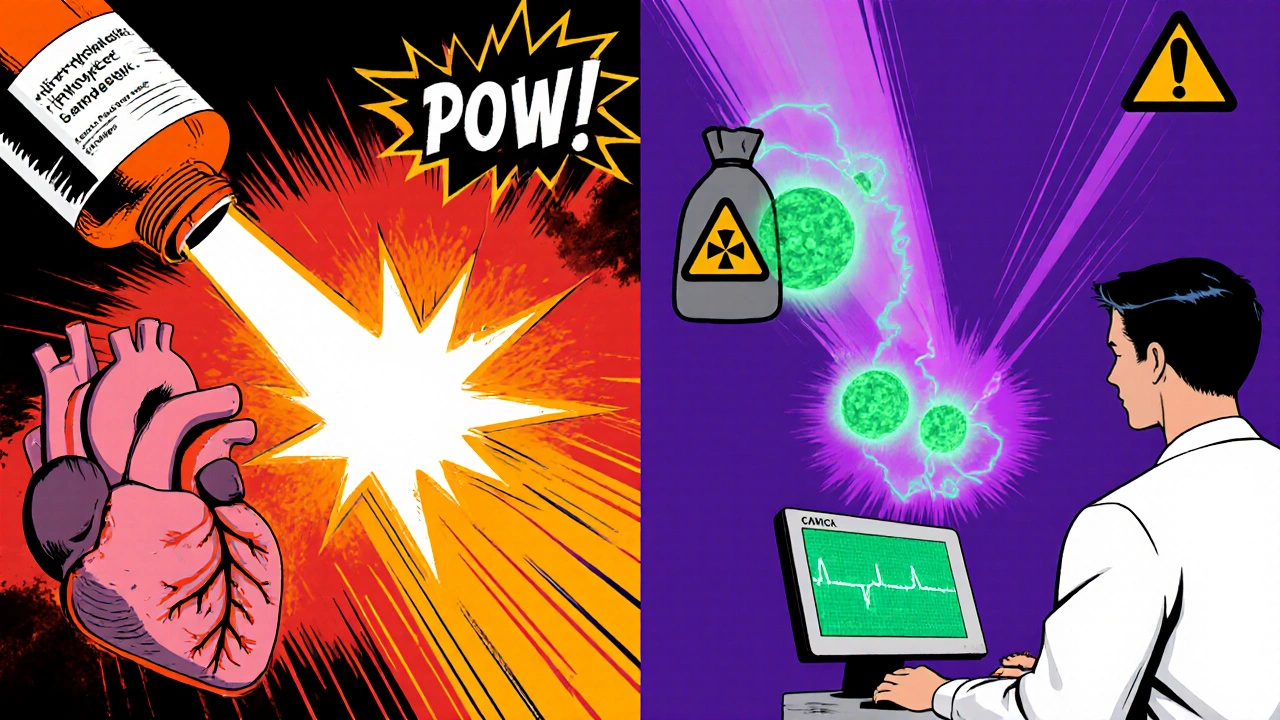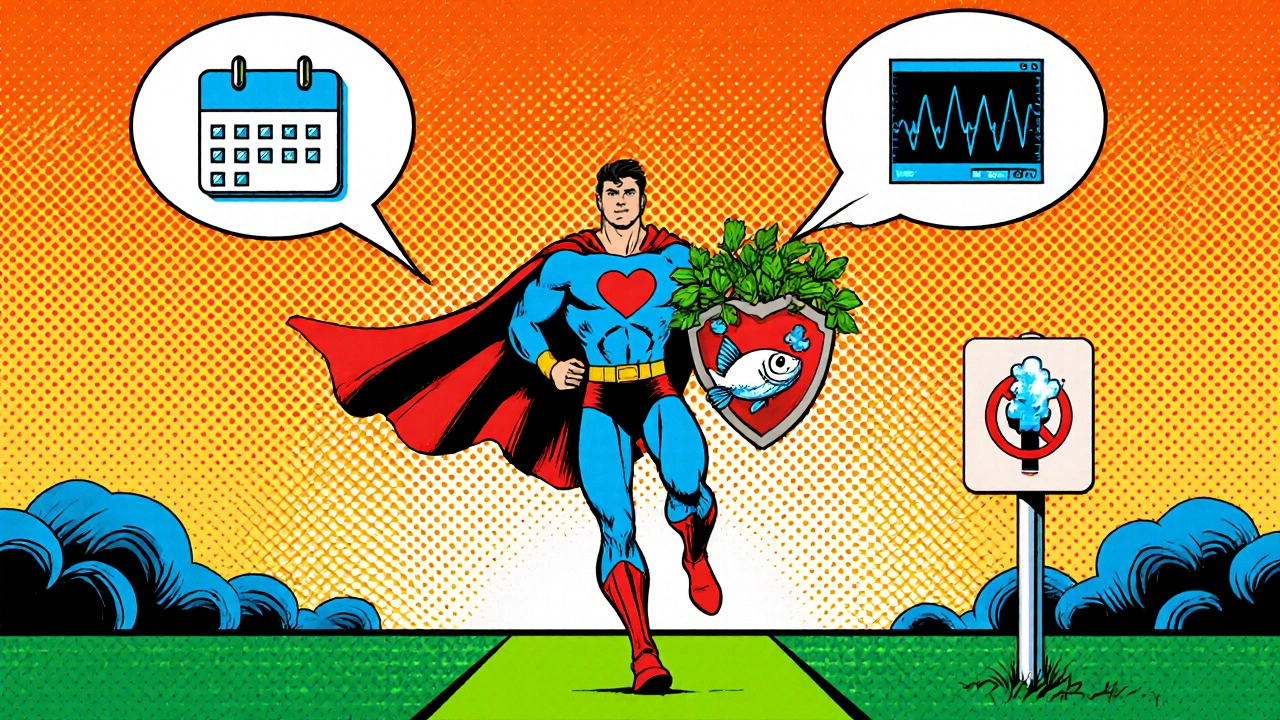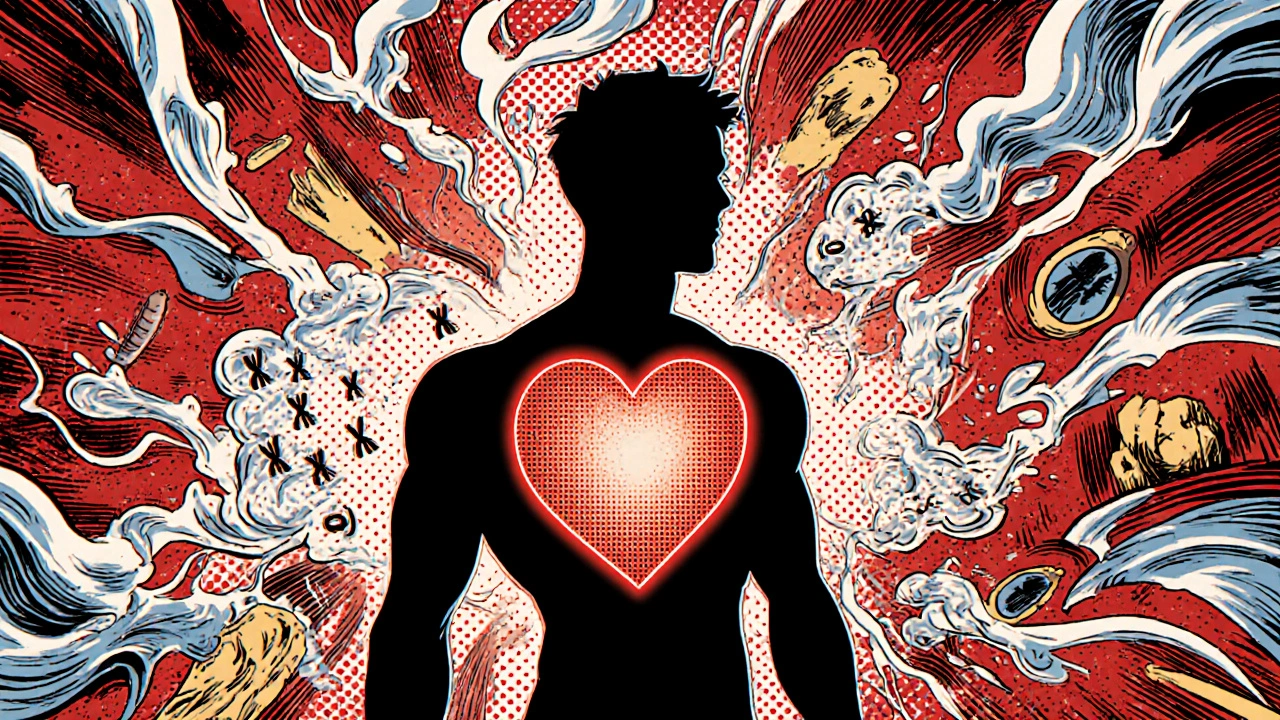Blood Cancer Treatment Cardiovascular Risk Checker
Assess Your Treatment Risks
This tool helps you understand cardiovascular risks associated with your blood cancer treatment and recommended mitigation strategies.
When a person is diagnosed with Blood cancer is a group of malignancies that start in the blood‑forming tissues, such as bone marrow or the lymphatic system. The news can feel overwhelming, and many patients wonder how the disease and its treatment will affect their heart. This guide walks you through the connection between blood cancer and cardiovascular health, highlights the biggest risk factors, and gives practical steps to keep your heart in shape while you fight cancer.
Key Takeaways
- Blood cancers can raise the risk of heart problems through the disease itself, treatment side‑effects, and lifestyle changes.
- Chemotherapy, radiation, and stem‑cell transplants each carry specific cardiovascular threats such as hypertension, atherosclerosis, and thrombosis.
- Early screening, blood‑pressure control, and regular cardio‑oncology check‑ups are essential for prevention.
- Adopting a heart‑healthy diet, staying active, and quitting smoking can offset many treatment‑related risks.
- New research into cardio‑protective drugs and biomarkers is improving outcomes for survivors.
Understanding Blood Cancer
Leukemia is a type of blood cancer that mainly affects white‑blood‑cell production. Lymphoma originates in the lymphatic system, while Multiple myeloma involves malignant plasma cells in bone marrow. All three can cause anemia, low platelet counts, and systemic inflammation, which in turn stress the cardiovascular system.
Inflammation raises levels of C‑reactive protein (CRP) and interleukin‑6, both linked to atherosclerotic plaque formation. Moreover, abnormal blood cells can increase blood viscosity, making the heart work harder.
How Blood Cancer Affects the Heart
The disease itself can lead to direct cardiac complications:
- Thrombosis - clots forming in veins or arteries - is more common because cancer cells release clot‑promoting substances.
- Hypertension can develop from cytokine storms and renal involvement.
- Atherosclerosis may accelerate due to chronic inflammation.
These conditions raise the likelihood of heart disease events such as myocardial infarction or stroke, especially in older patients.
Treatment‑Related Cardiovascular Risks
Chemotherapy drugs, radiation therapy, and stem‑cell transplantation each have a distinct cardio‑toxic profile.
| Treatment | Typical cardiovascular impact | Mitigation strategy |
|---|---|---|
| Anthracycline‑based chemotherapy (e.g., doxorubicin) | Left‑ventricular dysfunction, heart failure | Baseline echo, limit cumulative dose, cardioprotective agents (dexrazoxane) |
| Tyrosine‑kinase inhibitors (e.g., dasatinib) | Pulmonary hypertension, arrhythmias | Regular blood‑pressure monitoring, echocardiography |
| Radiation to chest | Coronary artery disease, valvular fibrosis | Low‑dose techniques, yearly stress tests after 10years |
| Stem‑cell transplant | Accelerated atherosclerosis, hypertension | Intensive lipid control, ACE inhibitors |
Beyond drugs, supportive medications like steroids can raise blood‑sugar and cholesterol, adding another layer of risk.

Managing Cardiovascular Health During Cancer Care
- Baseline assessment: Before treatment begins, get an electrocardiogram (ECG), echocardiogram, and lipid profile. This creates a reference point for later comparison.
- Ongoing monitoring: Repeat cardiac imaging every 3‑6months for high‑risk regimens. Watch for changes in ejection fraction or new valvular lesions.
- Medication coordination: Cardiologists, hematologists, and pharmacists should review all prescriptions. For example, avoid combining non‑steroidal anti‑inflammatory drugs (NSAIDs) with certain chemotherapies due to kidney strain.
- Anticoagulation when needed: If thrombosis occurs, low‑molecular‑weight heparin or direct oral anticoagulants are preferred over warfarin because they have fewer drug‑interaction issues with chemotherapy.
Lifestyle Strategies to Reduce Risk
Even during intensive treatment, small habit changes can make a big difference.
- Heart‑healthy diet: Focus on omega‑3‑rich fish, whole grains, berries, and leafy greens. Limit processed meats and sugary drinks that can worsen inflammation.
- Physical activity: Aim for 150minutes of moderate‑intensity exercise per week, as tolerated. Walking, stationary cycling, and gentle yoga are generally safe.
- Smoking cessation: Smoking compounds chemotherapy toxicity and accelerates atherosclerosis. Seek nicotine‑replacement therapy or counseling.
- Stress management: Mindfulness, meditation, and counseling can lower cortisol, which otherwise raises blood pressure.
- Weight control: Maintaining a BMI under 25kg/m² improves blood‑pressure and lipid levels.
Monitoring and Follow‑up After Treatment
Survivorship care plans should include long‑term cardiovascular surveillance. Guidelines from the American Society of Clinical Oncology (ASCO) recommend:
- Annual blood‑pressure check
- Echocardiogram every 2-5years, depending on prior exposure to cardiotoxic agents
- Periodic lipid panels and glucose testing
- Prompt evaluation of any new chest pain, shortness of breath, or palpitations
Early detection of heart dysfunction allows for interventions-such as beta‑blockers or ACE inhibitors-that can prevent progression to heart failure.

Emerging Research and Future Directions
Scientists are developing biomarkers that predict who will develop cardiac side‑effects. Troponin‑I and brain‑type natriuretic peptide (BNP) measured after each chemotherapy cycle show promise for early warning.
Novel cardioprotective drugs, like neuregulin‑1 analogues, are being tested in phase‑II trials. Meanwhile, precision radiation techniques (proton therapy) drastically reduce cardiac dose, especially for younger patients.
Understanding the genetic basis of susceptibility-like polymorphisms in the NAD(P)H oxidase pathway-could eventually tailor treatment plans to minimize heart damage.
Bottom Line
Blood cancer and heart health are tightly linked through disease mechanisms, treatment side effects, and lifestyle factors. By getting a solid cardiac baseline, staying on top of monitoring, and embracing heart‑friendly habits, patients can drastically lower the odds of serious heart problems and enjoy better overall outcomes.
Frequently Asked Questions
Can blood cancer itself cause a heart attack?
Yes. The chronic inflammation and increased blood viscosity seen in many blood cancers can accelerate plaque formation and promote clotting, both of which raise the risk of a heart attack.
Which chemotherapy drugs are most harmful to the heart?
Anthracyclines such as doxorubicin and daunorubicin are the most cardiotoxic, especially when cumulative doses exceed 300mg/m². Tyrosine‑kinase inhibitors like dasatinib can also cause pulmonary hypertension.
Do I need to see a cardiologist if I’m getting stem‑cell transplant?
Yes. Stem‑cell transplants carry a high risk of hypertension and accelerated atherosclerosis, so a pre‑transplant cardiac evaluation and post‑transplant monitoring are recommended.
Can lifestyle changes really offset treatment‑related heart risks?
Studies show that patients who maintain a Mediterranean‑style diet, exercise regularly, and quit smoking have up to 30% lower incidence of chemotherapy‑induced cardiotoxicity.
How often should I have heart scans after finishing chemo?
If you received high‑risk drugs, an echocardiogram every 6months for the first two years is advised, then annually. Lower‑risk regimens may only need a check‑up every 2-3years.

